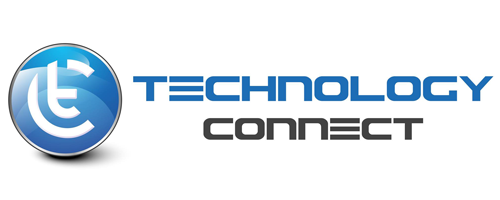

How Outsourcing Deliver Business Growth and Profitability
Ensuring that your strategic supplier contracts include an innovation framework is a powerful lever to realise significant benefits from technology sourcing relationships.
Suppliers and buyers keep talking about how to leverage outsourcing to increasingly drive technology driven innovation in business models, products and services. Unfortunately, a large proportion of companies will not achieve this, since they do not have a realistic and practical innovation framework, process and responsibilities in their sourcing contracts. Technology Connect has developed a specific Innovation and Value Add Schedule that companies can include in their technology outsourcing contracts to overcome this challenge.
What is innovation? Broadly defined, innovation is ‘change that adds value’. Innovation can be viewed as a continuum from incremental innovation (small steps forward with low risk and a high chance of success), to disruptive innovation (great leaps in the advancement of a product, service or technology, or the introduction of a new business model, product or service). It is therefore important that the buying organisation specify what innovation means in the context of the contract and how innovation is measured. Is the focus on incremental innovation (i.e. continuous improvement) or disruptive innovation? Secondly, the innovation outcome must be related to a quantifiable measure, e.g. revenue or product. It is not enough to produce an idea. As Thomas Edison rightly pointed out many years ago: The value of an idea lies in the using of it.
Realising business benefits from innovation requires getting three things right:
Leadership, e.g. executive commitment, clearly communicated strategic objectives, empowerment of the innovation team;
Input, e.g. information, resources, time and budget; and
Process, e.g. framework, tools and techniques.
All three areas needs to be documented in the contract, including clear definitions of roles and responsibilities between the buyer and vendor.
Our goal is to ensure that you are able to select and implement projects which have the most potential for genuine value, rapid pay back and cost benefit.
Our experience in working with clients has shown that without a formal process, harnessing the right ideas is just a stab in the dark. The process for innovation must therefore assists with, and be integrated into business planning, capital allocation and investment, budgeting and portfolio management. The innovation process as set out below in figure 1 has four key phases, each with a discrete set of activities, as follows:
Figure 1: Innovation Management Process
Source: Technology Connect
Define. The first phase is the definition phase. This phase sets the criteria for innovation by:
Defining innovation in the context of the buying organisation and the sourcing relationship, including the scope of innovation
Setting out the desired outcomes and agreeing critical success factors
Understanding strategic business objectives for both organisations
Broadly assessing current innovation capabilities and areas for improvement (Technology Connect can help organisations determine their innovation capabilities, including a comparison to other organisations)
The output of this phase is a documented understanding of the current state, and an assessment of the business ecosystem, so that later ideation activity can be appropriately calibrated to the innovation requirements.
Generate. The generation phase, or ideation as it is often referred to, is pivotal to the success of the innovation activities and involves harnessing the raw ideas that will drive new investments and business transformation. It is important to use a wide-range of creative thinking techniques to challenge the innovation team to generate radically new ideas and concepts. Team members in ideation sessions must be open to challenging comfort zones and “sacred cows”. This can be achieved by introducing relevant stimulus such as the latest relevant research or lateral thinking. A useful approach is to change the environment for the idea generation sessions from the normal office environment to a location outside the organisations, or inviting people with independent experience and “fresh” thinking to join brainstorming workshops.
Prioritise. The objective of prioritisation is to ensure that the strongest, most powerful ideas are taken forward into realisation. Ideas generated in Phase 2 are assessed against a set of agreed criteria by key stakeholders. The results of this assessment are then analysed using best practice portfolio management tools and techniques providing clarity on which ideas to proceed with, i.e. allocate investments. Critically, the output should be reflective of the views of all stakeholders, giving each idea an equal chance to be explored whilst providing a traceable rationale for investment decision making.
Realise. So often great ideas stumble along the way because of organisational barriers, particularly lack of funding or lack of a commercial approach to concept and prototype development, testing and launch. At Technology Connect we always focus on ensuring our clients can realise the benefits of any work undertaken. Therefore, the last step in our innovation process is to facilitate effective decision making within the buying organisation. To expedite the funding process, the team should develop a convincing and detailed business case for the innovation initiative, complying with internal decision making requirements and processes, e.g. the expected return on investment (RoI). Technology Connect can help navigate complex corporate criteria, such as risk requirements, regulatory frameworks or capital expenditure requirements.
The overall objective is to ensure that the idea can be implemented smoothly and swiftly, enabling realisation of the benefits from innovation in outsourcing contracts. Figure 2 below illustrates how the innovation framework evolves over time and the cash flow impact.
Figure 2: Innovation Framework and Benefits Realisation
Figure 2 above illustrates that an initial negative cash flow should be expected when driving innovation. The first challenge for innovation teams lies in shortening the time and investment required for the period starting at phase 1 to product/service launch. The second challenge is how to increase the slope, height and length of the cash flow curve. As the outsourcing partners become familiar with the phases and activities in the innovation framework, and as multiple innovations are initiated on the innovation journey, these challenges are overcome, and both organisations will realise huge benefits from their outsourcing partnership.
If interested in driving innovation from your technology sourcing contracts, please contact us on info@technologyconnect.com.au
Tom is the founder and managing partner of Technology Connect. He has 20 years of experience in the IT industry and management consulting. He has advised senior executives in the areas of sourcing strategy, market testing, contract negotiation and vendor management across a broad range of industries and geographies including Australia, New Zealand, Asia and Europe.

